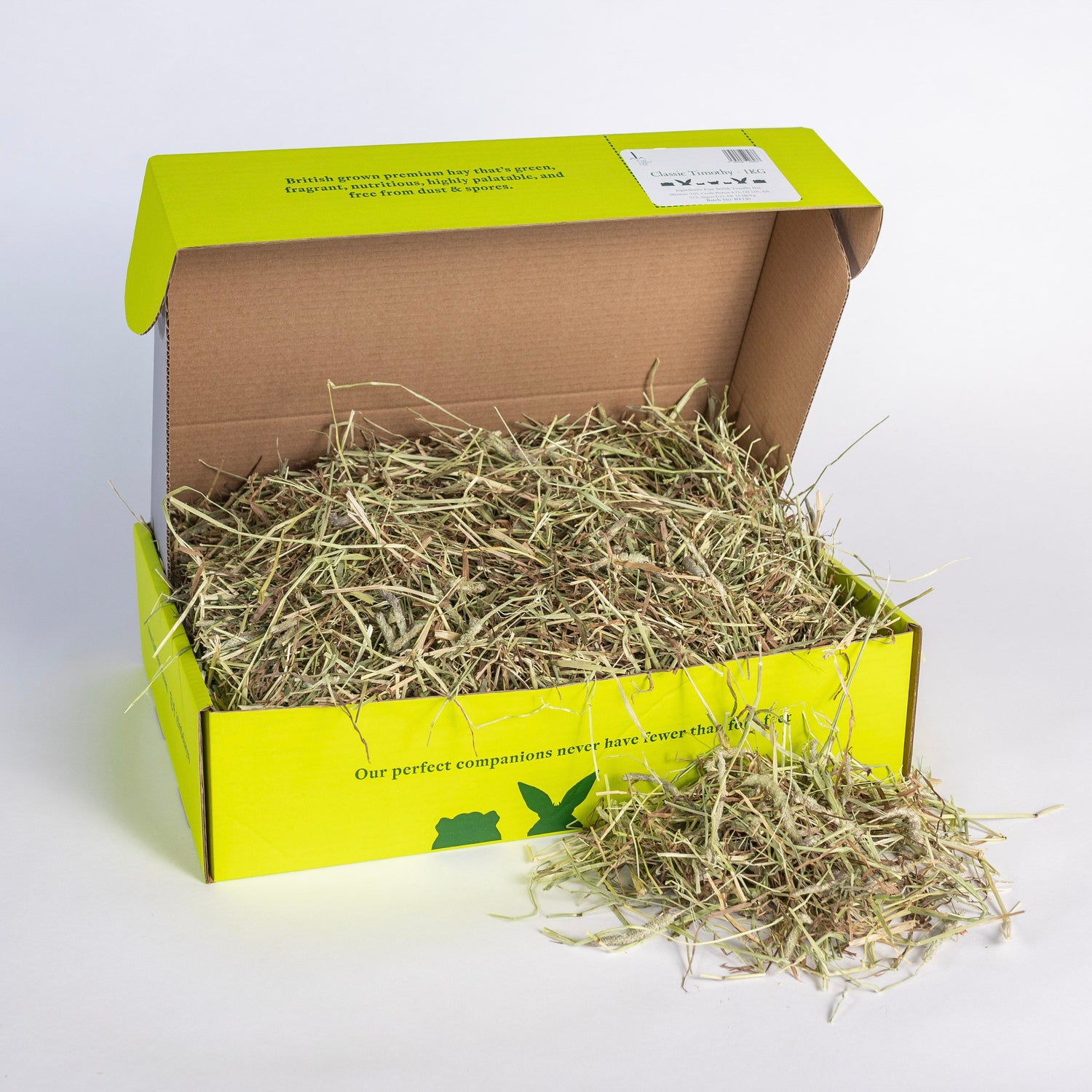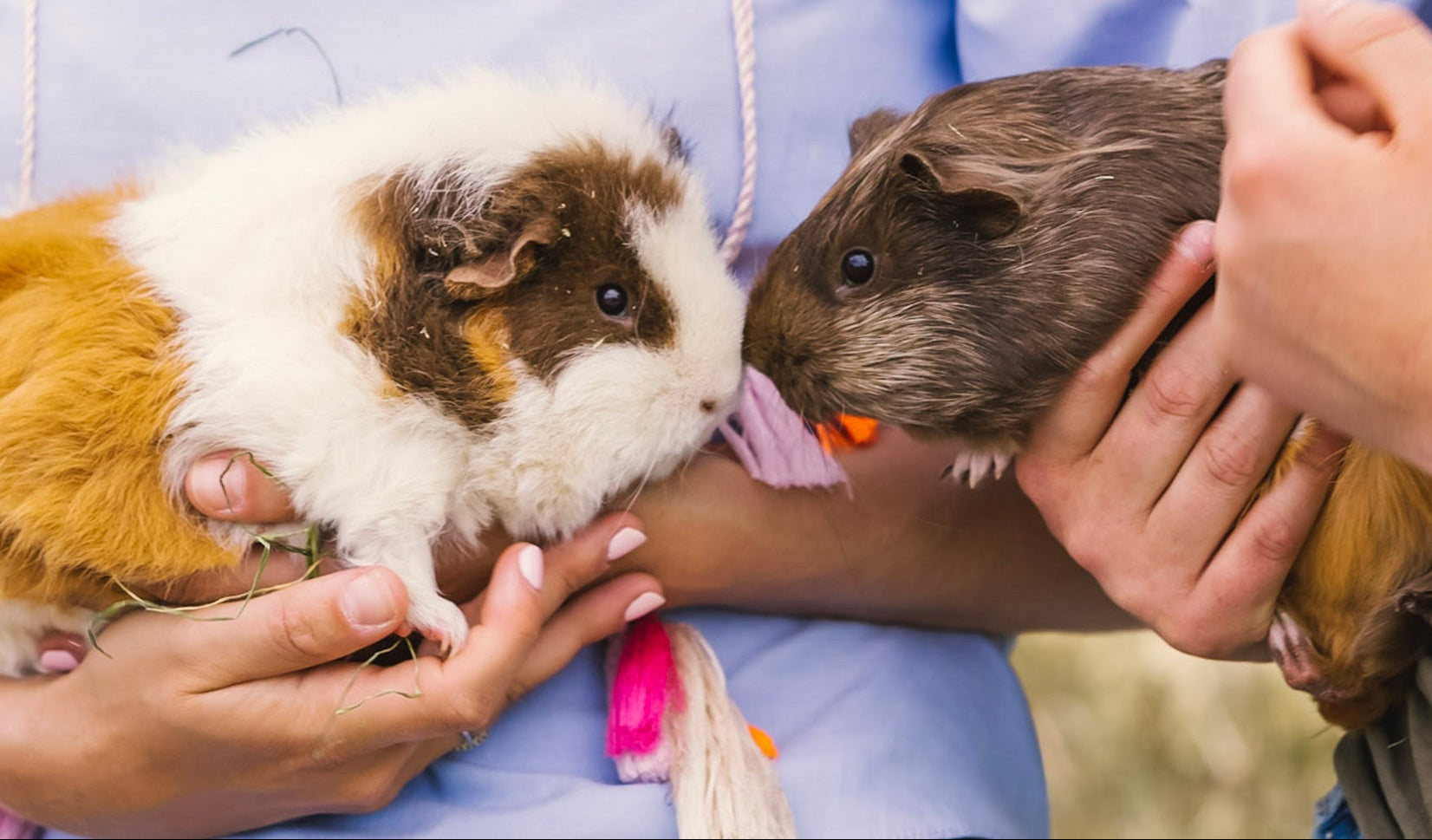Guinea pigs make wonderful pets, but they require specific care to thrive. Here are some expert tips on how to provide the best care for your furry friends.
What size housing do guinea pigs need?
Guinea pigs need a spacious cage to live happily. The minimum recommended size for a pair of guinea pigs is 7.5 square feet, but bigger is always better. Make sure the cage has a solid bottom to protect their sensitive feet. Two boars will need more room than two females while larger groups will need additional space to avoid fighting.
It is important to provide enough hides, bowls and water bottles to have one each, particularly with boar pairs.

Do guinea pigs need companionship?
Guinea pigs are social animals and thrive in the company of their own kind. It's best to keep them in pairs or small groups to prevent loneliness and provide mental stimulation. Just make sure to introduce them properly and take advice from vets or reputable rescues on how to properly bond them to avoid any conflicts.
Neutering is essential to avoid unwanted litters - Guinea Pigs are able to get pregnant from around 3 weeks old and will breed within the same family so it is important to separate males and females at three weeks old.
What should guinea pigs eat?
Guinea pigs require a diet high in hay, supplemented with fresh vegetables and a small amount of pellets. They also need a good source of vitamin C, as they cannot produce it on their own. Avoid feeding them foods high in sugar or fat.
Mimicking their diet in the wild is best practice, a selection of hay types ensures diversity and variety in their diet and helps keep them eating their hay. Their diet should be around 85% hay so multiple hay varieties helps to ensure they keep going back to the hay pile! Leafy Forage would be found in the wild and would make up around 10% of their diet along with floral forages too. Guinea Pig safe treats and pellets fortified with vitamin C are perfect to finish off a balanced piggy diet. Veg like bell peppers and romaine lettuce can be fed daily while things like carrot and fruits should be fed 1-2 times per week as they are higher in sugars.
How can you enrich a guinea pig's life?
Guinea pigs are curious creatures that need mental and physical stimulation. Provide them with plenty of toys, tunnels, and hiding spots in their cage. You can also let them explore outside of their cage in a safe, enclosed area for some extra enrichment.
By following these expert tips on housing, companionship, diet, and enrichment, you can ensure that your guinea pigs live a happy and healthy life. Remember, proper care and attention are key to keeping your furry friends thriving.
Not sure which Hay is the right for your Guinea Pig?
We have checked in with our rep team to help guide you and there is a split verdict! It would seem most of our hays are seen as winners but it varies from household to household.
Chloe feeds Luna and Winnie our Meadow hay using our Compressed bales. The guinea pigs live inside so the compressed bales ensure she is minimizing dust while the meadow mix is low in calcium which is perfect for Luna who is on a controlled calcium diet.
Francesca feeds Paul & Lionel our Timothy Hay. Both Paul and Lionel have sensitive tums so Timothy hay gives the most balanced nutrition for their needs!
Silky Soft is the ultimate guinea pig hay however that is currently out of stock until later in the year however Oat hay is proving a winner with lots of customers and reps. It is a lovely added treat, providing fibre and protein and is a close match nutritionally to the popular Silky Soft.
Cotswold Sweet allows for a safe burrow and play ground for your piggies, plus it is probably regarded as our most popular hay due to it's sweet taste and smell. Made from a Rye Grass seed, it is great for keeping weight on fussy piggies and managing teeth health as the strands are so long!













